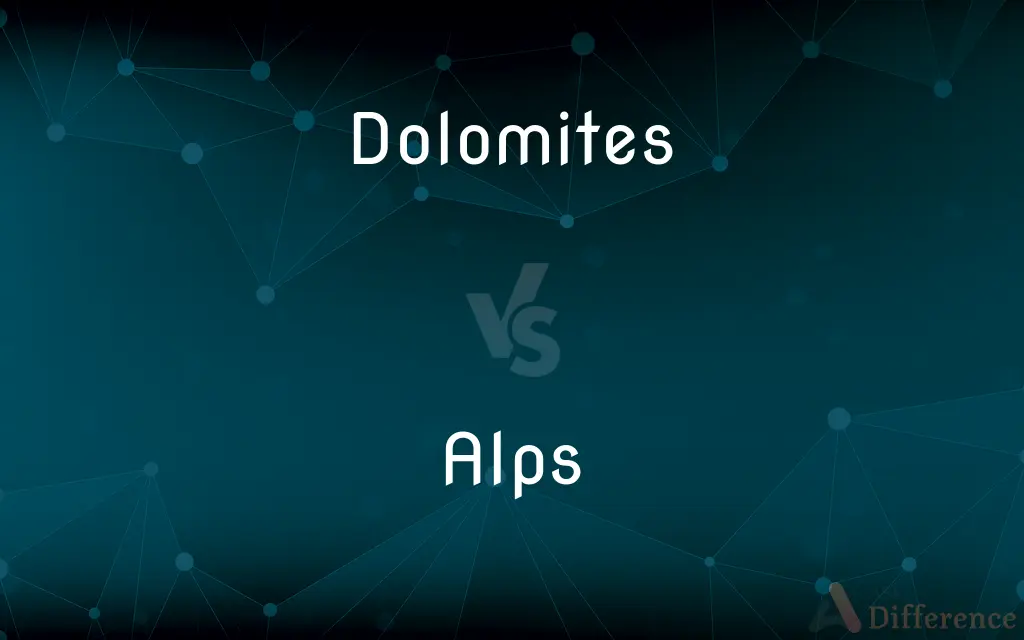Dolomites vs. Alps — What's the Difference?

Difference Between Dolomites and Alps
ADVERTISEMENT
Compare with Definitions
Dolomites
The Dolomites (Italian: Dolomiti [doloˈmiːti]; Ladin: Dolomites; German: Dolomiten [doloˈmiːtn̩] (listen); Venetian: Dołomiti [doɰoˈmiti]: Friulian: Dolomitis), also known as the Dolomite Mountains, Dolomite Alps or Dolomitic Alps, are a mountain range located in northeastern Italy. They form part of the Southern Limestone Alps and extend from the River Adige in the west to the Piave Valley (Pieve di Cadore) in the east.
Alps
The Alps are the highest and most extensive mountain range system that lies entirely in Europe, stretching approximately 750 mi (1,210 km) across eight Alpine countries (from west to east): France, Switzerland, Monaco, Italy, Liechtenstein, Austria, Germany, and Slovenia.The Alpine arch generally extends from Nice on the western Mediterranean to Trieste on the Adriatic and Vienna at the beginning of the Pannonian Basin. The mountains were formed over tens of millions of years as the African and Eurasian tectonic plates collided.
Dolomites
A white or light-colored mineral, essentially CaMg(CO3)2, used in fertilizer, as a furnace refractory, and as a construction and ceramic material.
Alps
Plural of alp
Dolomites
A magnesia-rich sedimentary rock resembling limestone.
ADVERTISEMENT
Alps
A large mountain system in south-central Europe; scenic beauty and winter sports make them a popular tourist attraction
Dolomites
Plural of dolomite
Share Your Discovery

Previous Comparison
Dipole vs. Bipole
Next Comparison
Edge vs. Vertex













































